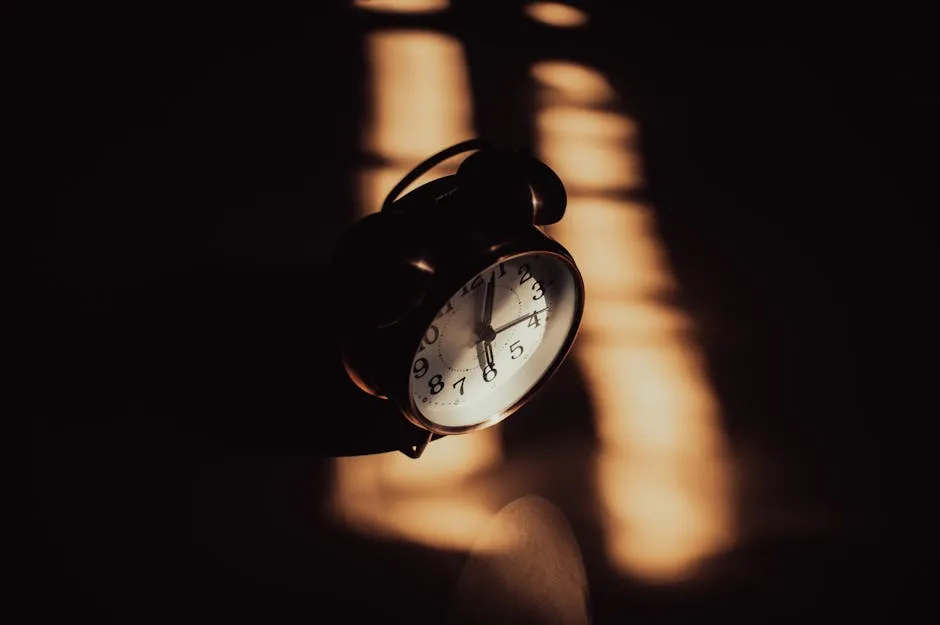
Why Is Adjusting to New Time Zones Challenging for Business Trips?
Introduction
Traveling across time zones for business can feel like a complex puzzle, where every piece needs to fit perfectly. Yet, for many business travelers, the reality is a whirlwind of jet lag, missed meetings, and disrupted routines. Why is it that a simple flight can turn our internal clocks upside down? This article examines the nuances of why adjusting to new time zones is so challenging, especially for professionals on the go.
One major factor is our circadian rhythms. These natural cycles dictate when we feel awake and when we want to snooze. They’re finely tuned to our home time zone, making it a tough task to sync up with a new one. Jet lag is another villain in this story—our bodies can feel like they’re fighting against us, leading to fatigue and irritability.
Moreover, the pressure of business travel adds fuel to the fire. Meetings, deadlines, and the need to perform at peak levels can make the adjustment feel even more daunting. The psychological stress of needing to be “on” can exacerbate physical symptoms, creating a perfect storm for business travelers.

But fear not! In this article, we’ll tackle the science behind this struggle and provide practical tips for overcoming jet lag. From adjusting sleep schedules to leveraging technology, we’ve got you covered. Get ready to discover strategies that can help you navigate the tricky waters of time zone changes, ensuring smoother transitions and a more productive business trip. Say goodbye to the struggle of time zone adjustment and hello to a more seamless travel experience!
The Biological Basis of Time Zone Adjustment
Understanding Circadian Rhythms
Circadian rhythms are the body’s internal clocks. They guide our sleep-wake cycles over a 24-hour period. These rhythms respond primarily to light, regulating when we feel awake or sleepy. Essentially, when the sun rises, our bodies start the day, and as it sets, we relax and wind down.
Crossing time zones disrupts these natural rhythms. For instance, if you travel from New York to London, your internal clock, still set to Eastern Time, conflicts with London’s local time. This mismatch causes confusion in hormone production, particularly melatonin, which regulates sleep. As a result, you may find yourself wide awake at 3 AM when your body thinks it’s still set to your home time zone.
When circadian rhythms get out of sync, several biological processes are affected. Sleep quality decreases, leading to restless nights and groggy mornings. Metabolism can also take a hit, affecting how efficiently our bodies process food. This disruption can result in unpleasant symptoms like fatigue, irritability, and difficulty concentrating.

Jet Lag: Symptoms and Effects
Jet lag is the unwanted souvenir that comes with crossing multiple time zones. It’s not just an inconvenience; it can feel like a full-blown assault on your well-being. Common symptoms include extreme fatigue, irritability, and cognitive impairment. You might feel as if your brain is running on dial-up while everyone else is enjoying high-speed internet.
For business professionals, the effects of jet lag can be detrimental. Imagine walking into a high-stakes meeting, but your brain is still on a different schedule. Lack of focus can lead to poor decision-making, and irritability can sour interactions with colleagues or clients. The inability to think clearly can diminish productivity and hinder effective communication.
Moreover, the cumulative effects of jet lag can cause long-term consequences. Frequent travelers may find themselves battling chronic fatigue, leading to burnout. When important decisions hang in the balance, being out of sorts can have significant repercussions on business performance.

The Science Behind Time Zone Adjustment
Research on time zone adjustment reveals fascinating insights. Studies indicate that individuals experience varying levels of difficulty when adapting to time changes. Factors such as age, sleep habits, and even genetics play significant roles. Younger people generally adjust more quickly than older adults, who may need a bit more time to recalibrate their internal clocks.
One study highlighted that eastward travel tends to be more challenging. This is likely due to “losing” hours rather than “gaining” them, which can feel more disorienting. On average, it takes about one day per time zone crossed to adjust fully. However, some individuals may bounce back in just a day or two, while others might experience lingering effects for a week or more.
Understanding these variations can help travelers prepare better. By recognizing your own body’s response to time zone shifts, you can create strategies that work for you. This could involve adjusting your sleep schedule before departure or utilizing light exposure techniques upon arrival.
Overall, grasping the biological basis of time zone adjustment not only aids in personal well-being but also enhances professional performance. With the right knowledge, business travelers can tackle the challenges of jet lag head-on and maintain productivity on their journeys.

Strategies for Successful Time Zone Adjustment
Pre-Trip Preparation
Before you even step foot on that plane, it’s time to get your sleep schedule in check. Adjusting your sleep patterns a few days prior to travel can help your body transition smoothly. If you’re heading east, try going to bed and waking up a bit earlier. For westward travel, stay up a little later. This gradual shift reduces the shock your body experiences when you land.
Flight selection also plays a crucial role. Book a flight that arrives in the evening local time. Why? Because it’s easier to sync up with the local rhythm. Plus, it gives you a chance to enjoy a good night’s rest in a comfy hotel bed instead of battling through the day in a sleep-deprived fog. Don’t underestimate the power of a little planning!

Speaking of planning, don’t forget to pack a Travel Pillow Memory Foam. It’s like a cloud for your neck, ensuring you arrive at your destination feeling more refreshed and less like a pretzel.
In-Flight Practices
Hydration is your new best friend during travel. Airplane cabins are notoriously dry, and dehydration can worsen fatigue and jet lag. Sip water regularly throughout your flight and steer clear of alcohol and excessive caffeine. They may seem tempting, but they’ll only leave you feeling more drained.
Meal timing is another essential factor. Stick to the meal schedule aligning with your destination’s time zone if possible. Opt for lighter meals to avoid that post-meal slump. And don’t forget to stretch! Perform simple exercises in your seat and take brisk walks down the aisle if you can. Movement helps keep your blood flowing and combats stiffness, especially on those long flights.

Upon Arrival
Once you’ve arrived, it’s time to engage with your new surroundings. Immerse yourself in local activities, whether it’s visiting a nearby café or exploring a local park. This can help you forget about travel fatigue and get into the rhythm of your new environment. Plus, it’s an excellent way to experience the local culture!
Sunlight exposure is crucial for resetting your internal clock. Soak up those rays! Spend time outdoors, especially in the morning. Natural light helps signal to your body that it’s time to be awake. It can combat feelings of grogginess and set the stage for a successful adjustment.
And if you’re looking to block out distractions while you settle in, consider investing in some Noise Cancelling Headphones. They’re perfect for drowning out the chaos of the world, letting you relax and recharge.

Technology and Tools
Technology can be a lifesaver when managing time zone changes. Consider using apps designed for time management and scheduling. Apps like World Time Buddy or Time Zone Converter can help you keep track of different time zones. This makes scheduling meetings or calls less of a headache.
Gadgets can also enhance your travel experience. Noise-canceling headphones can block out distractions during flights or at your hotel. Sleep masks can help you create a restful environment, regardless of your surroundings. Consider a portable white noise machine if you’re easily disturbed by unfamiliar noises. These tools can promote relaxation and better sleep. You can find a great Portable White Noise Machine to help you sleep like a baby on the go!

Maintaining Communication
Communication is key, especially when managing teams across different time zones. Be clear and transparent about your availability with colleagues. Use shared calendars to keep everyone informed about your schedule. This helps set expectations and reduces confusion.
When scheduling meetings, take time zone differences into account. Try to choose times that work for everyone involved. If possible, avoid booking meetings in the first few days after your arrival. This allows you to settle in and feel more like yourself. Open lines of communication will make the adjustment smoother for everyone involved, keeping projects on track and spirits high.
With these strategies in hand, you can conquer the challenges of time zone adjustments and make your business trips more productive and enjoyable! And don’t forget to keep your important documents safe with an RFID Blocking Passport Holder. It’s a small investment for peace of mind!

FAQs
What is jet lag?
Jet lag is a temporary sleep disorder. It occurs when traveling across multiple time zones. Symptoms include fatigue, drowsiness, irritability, and difficulty concentrating.
How long does it take to adjust to a new time zone?
Generally, it takes about one day to adjust for each time zone crossed. However, individual experiences may vary based on factors like age and travel direction.
Are there any supplements that can help with jet lag?
Melatonin is a popular supplement for managing sleep cycles. Other natural remedies, like chamomile tea, may also aid relaxation.
How can I minimize the effects of jet lag on my work?
To minimize jet lag impacts, adjust your sleep schedule before traveling, stay hydrated, and engage in local activities upon arrival. Keep meals light and aligned with local time.
What should I do if I have a critical meeting shortly after arriving?
If you have an important meeting soon after arrival, prepare by resting beforehand and maintaining hydration. Consider scheduling your meeting for later in the day to allow some adjustment time.
Conclusion
Adjusting to new time zones can be quite the adventure for business travelers. However, it doesn’t have to leave you feeling like a zombie. By understanding the biological and psychological factors at play, you can take charge of your travel experience. Jet lag, that pesky companion on long-haul flights, can wreak havoc on your productivity. But fear not! There are ways to combat it.
Start by preparing ahead of time. Adjust your sleep schedule a few days before departure. This simple trick can ease the transition and help your body adapt more smoothly to local time. When you finally land, engage in local activities and soak up the sun. Sunlight is your best friend when resetting your internal clock.
Moreover, hydration is crucial. Drinking water like it’s your new hobby can combat fatigue and keep you alert. And don’t forget your meals! Eating lighter and aligning your meal times with the new time zone can make a world of difference. Consider keeping your snacks healthy and travel-friendly with Healthy Snack Bars.

Embrace the journey! Every time zone crossed is a step closer to expanding your horizons. When you manage your travel experience effectively, you can unlock a treasure trove of rich experiences and successful business outcomes. So, the next time you pack your bags, remember: with a little preparation and smart practices, you can make the most of your time, no matter where your travels take you.
Understanding the challenges of jet lag can help you prepare for your travels. Why do we experience jet lag when traveling across time zones
Please let us know what you think about our content by leaving a comment down below!
Thank you for reading till here 🙂
All images from Pexels




